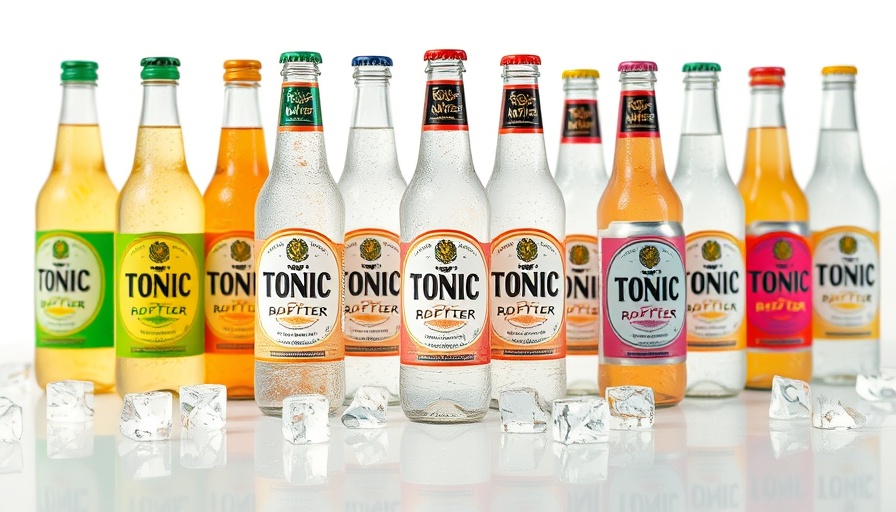
Discovering Tonic Water: A Cultural Journey
Though often viewed simply as a mixer, tonic water has a rich history that intertwines with exploration, colonization, and global health. Its story began in the 17th century, where Jesuit missionaries in the Andes unearthed the healing potential of the cinchona tree’s bark, a primary source of quinine. This compound was crucial for combating malaria, allowing colonizers to traverse regions previously deemed too dangerous. Today, tonic water stands as a testament to how cultural practices and natural remedies can evolve, offering not only a refreshing drink but also an insight into history.
Choosing the Right Tonic: A Taste Test Adventure
At first glance, many might think all tonic waters are created equal. However, during a recent blind taste test, several brands revealed that nothing could be further from the truth. Brands like Fever-Tree and Q Mixers emerged as front-runners, showcasing both distinct flavor profiles and the ability to enhance cocktails without overwhelming them. The ideal tonic should strike the perfect balance between sweetness and bitterness, and our testing highlighted compelling variations in texture and carbonation among different brands.
Why the Right Tonic Matters to Your Cocktails
As digital nomads with a passion for food culture, understanding the nuances of tonic water can elevate your culinary experiences. A carefully selected tonic does not merely complement spirits like gin; it truly enhances the entire cocktail experience. Whether you're sipping a classic gin and tonic or exploring innovative mixed drinks, choosing the right tonic water can transform an ordinary drink into an extraordinary one. The right tonic creates intricate layers of flavor that can make or break a cocktail.
Tonic Water Around the World: A Global Perspective
The global landscape of tonic water reflects cultural diversity and personal tastes. From the artisanal small-batch tonics crafted with organic botanicals to classic brands like Canada Dry, there’s a world of options. Each country or region may favor a specific type of tonic depending on local tastes and drinking customs. Understanding these variances can enrich your travels and culinary adventures, allowing you to connect more deeply with the local culture.
Tips for the Perfect Tonic-Based Cocktail
Creating the perfect tonic-based cocktail at home can be quite straightforward. Here are some actionable tips to enhance your drink-making skills:
- Chill Your Ingredients: Always start with chilled tonic water and spirits to maintain carbonation and flavor integrity.
- Experiment with Garnishes: Fresh herbs, citrus peels, or even spices can greatly enhance the botanical notes of your tonic.
- Mind the Proportions: Strike a balance between your spirit and tonic - it should complement, not overpower.
With these tips, your cocktails can become conversation starters at gatherings, showcasing your ability to embrace diverse culinary cultures.
Final Thoughts on Tonic Water
As you embark on your journeys, collecting culinary insights and experiences, consider the humble tonic water. It’s not just a mixer; it’s a historical artifact, a flavor enhancer, and a cultural bridge. With brands becoming increasingly diverse and offerings expanding globally, the world of tonic has much to reveal. So, next time you indulge in a tonic-based cocktail, allow yourself to appreciate the rich history and vibrant culture behind every sip.
Explore new tonic waters and elevate your cocktail game - a refreshing adventure awaits!
 Add Row
Add Row  Add
Add 




Write A Comment